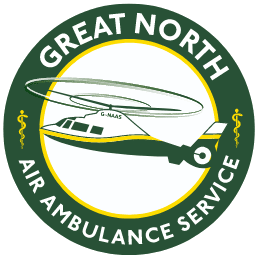This week, we announced the possibility of the world’s first jet suit paramedic in the Lake District.
After some world-wide news coverage and a social media frenzy, we undoubtedly had a lot of burning questions to answer!
Although the collaboration with Gravity Industries is still very much in the testing phase, we’ve tried to answer them as best we can…
What we’re really improving here with this equipment, is the time in which we get a highly qualified paramedic to the patient’s side, not getting the patient to the hospital.
The concept is like a paramedic on a motorbike, the solo paramedic can either treat the person on the scene and discharge them or they can arrange the appropriate ongoing care.
In the Lake District, any incident like this is already a multi-agency response, so mountain rescue will respond and we could pass information to them to give them better information about how they should respond and what kit they need.
Our priority is always to keep our critical care team and patient as safe as possible.
At the minute, the jet suit is covered under general aviation within the CAA so there is no requirement for a formal license to fly it.
If this project develops as we hope, we will work with Gravity to design a very robust flight training system to ensure that the paramedics are fully competent.
It’s also important to remember that the flight up the side of a hill is at relatively slow speeds and close to the ground so that is a big mitigation to any safety risks.
The jet suit would be strapped into the boot of the response vehicle.
All that would be needed is to sit back into the suit, put two leg straps a waist strap and two shoulder straps. A paramedic would be in the suit in about 30-45 seconds.
The mark 3 suit which is the one Gravity envisages working in this environment is a single button start which takes about 10 seconds.
So all in all, even in slow time, we would be in the suit ready to be airborne within a minute and a half to two minutes!
The suit has a capacity of carrying about 10-15kg which is the weight of one full rucksack which we use currently, allowing us to carry kit including a defibrillator and patient monitoring.
The kit would be placed in pouches accessible on the pilot’s legs and chest.
Built into the helmet is a display that in it current form shows engine parameters and speed.
Our intention is to build the ability to add waypoints to that display for the paramedic to follow.
At present, we have the technical skills and ability to use this equipment. We are still waiting on financial details and logistical resources before we can reach operational status. It’s too early to put a date on becoming operational.
The jet suit can be used and remain stable in mist and wind. Usage would likely be restricted in heavy rainfall or snow.
We have looked at the environmental impact of the suit and found that it is minimal.
Compared to the fast jets that operate in the Lake District and compared to the rescue and medical helicopters, it uses a vastly reduced amount of fuel.
In terms of the risks to the environment, which are in our belief negligible, versus the actual ability to save someone’s life that would be lost without it, we think the benefits outweigh any potential environmental impact.



